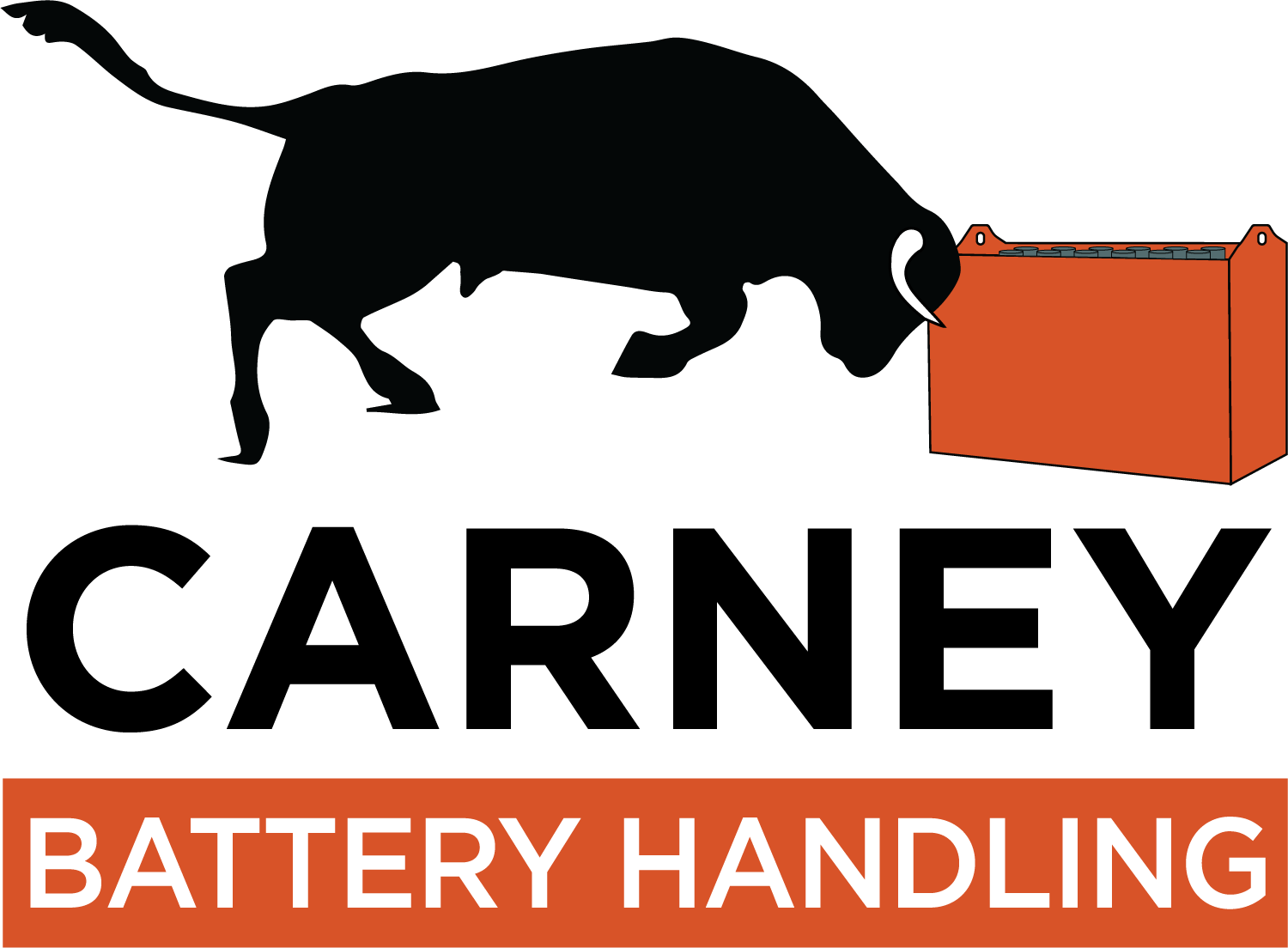A warehouse cart may seem simple, but it is an essential piece of equipment. It is not just a cart; it’s a time-saving tool. Every second on the warehouse floor is valuable, and selecting the right material handling equipment (MHE) can have a significant impact on efficiency. If the MHE is not suited for the task or capable of handling the load, productivity will suffer.
Warehouse carts serve as the workhorses of your client’s facility. When helping them choose equipment, it’s vital to select solutions that will ensure a good return on investment. Here’s what you need to know.
So What Exactly is a Warehouse Cart?
Warehouse carts simplify the process of moving loads from one location to another. They are typically constructed with a sturdy shelf or container mounted on wheels. While we are all familiar with the concept of a cart, a technical definition can help us understand it better. According to the Materials Handling Institute (MHI), what we commonly refer to as a warehouse cart is technically known as a platform truck. MHI defines it as a “four-or-more-wheeled hand truck with handles for pushing or hitches for pulling, sometimes referred to as a cart or (manual) platform truck.'”
Unlike forklifts, warehouse carts have flat surfaces instead of forks for lifting pallets. Loads rest on these surfaces, which may feature slopes or raised edges to keep items secure during transport. Various specifications, such as frame shape, shelf size, and carrying capacity, are considered to optimize the handling of common materials found in a warehouse, including machine parts, cartons, and pallets.
Warehouse carts are excellent for transporting materials in various scenarios, including:
- Scenarios with different travel paths, unlike cranes, which can only move along a fixed route.
- Environments with moderate flow-throughs that do not warrant the use of automated conveyors.
- Flat travel paths without barriers.
- Ramps that are not excessively steep.
These conditions make warehouse carts particularly suitable for stocking products, line feeding, order picking, and other daily material handling tasks. However, there are many different types of warehouse carts available. To select the right one for your facility, it is essential to understand all of the options.
Warehouse Carts: Types & Features
Order Picking Platforms
With a load capacity of up to 5,000 lb (2,268 kg), Picker Platforms are durable and suitable for” all types of warehouse operations.” Each unit that Carney offers is equipped with two built-in lifting side rails, a non-slip platform for safety, and a mesh backing for visibility. Standard units have a depth of 48 inches and an overall width of 42 inches.
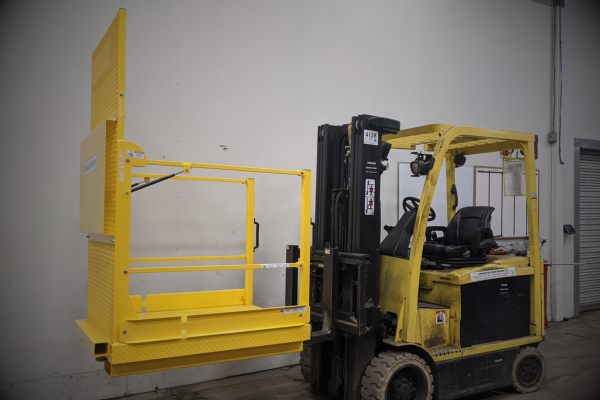
Stock Picking Carts
Stock Picking Carts feature ergonomic handles and five shelves designed for compact, quick, and efficient order picking. They include guards to prevent products from falling off during transport. Each unit is fitted with phenolic casters for easy maneuverability, and many come with fork pockets for quick transportation to designated areas. Custom options can be tailored to meet the requirements of particular applications.
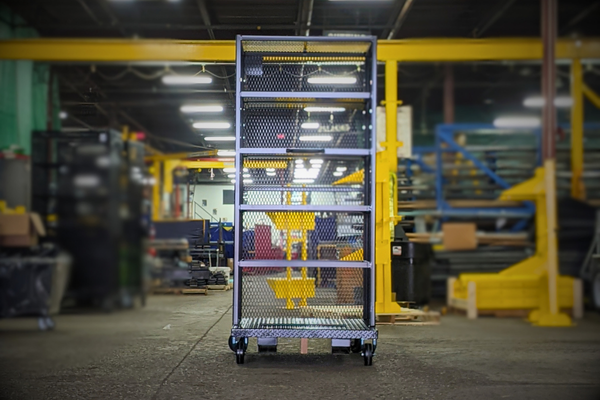
Bulk Quantity Warehouse Carts & Trucks
Flat Deck/Tow Carts
As the name implies, flat deck carts, also known as tow carts, are low-profile platforms designed for bulk transportation. Casters minimize friction and ensure a high weight limit (variable by model). The wheels can have brakes installed for when the cart is not in use. These can be stand-alone units or built as attachments, as shown in the picture below, for trucks or automated trolleys.
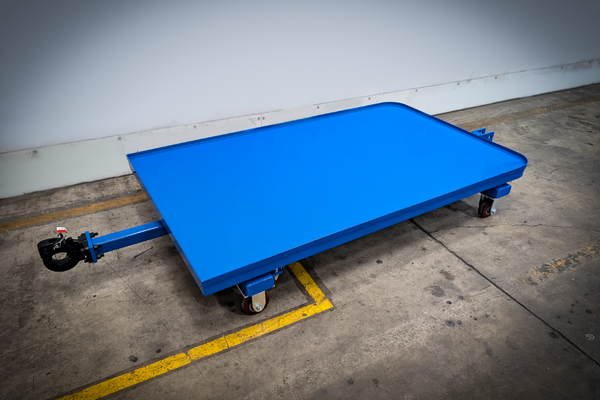
Lift Table Carts
Lift Table Carts are designed to handle oddly shaped or oversized items easily. Constructed from durable steel and powder-coated, lift tables utilize hydraulic pumps to position loads, reducing the risk of workplace injury. They roll easily throughout your client’s facility on polyurethane casters and can be customized (like the one below) for any application.
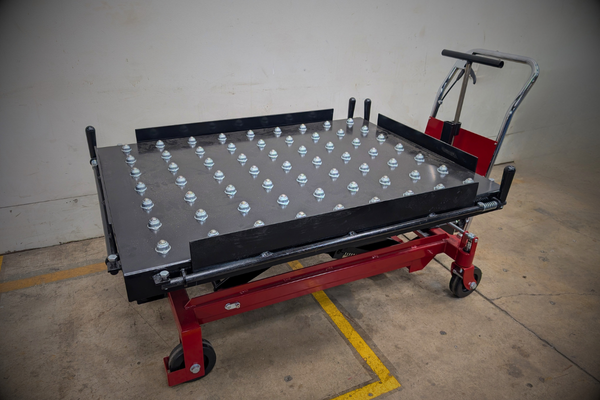
Powered Transfer Carts
Designed to enhance productivity and safety during material and product transfers, powered transfer carts can be customized to move a wide range of items and are equipped with front and rear laser detection sensors to automatically slow or stop the transfer cart if an obstruction is in its path. Often a complement to cranes transporting heavy loads at ground level, and the ideal solution for transferring material from one crane bay to another. Powered transfer carts can be steerable (capable of moving in any direction) or on rails (capable of moving in a straight line), suitable for both indoor and outdoor use.
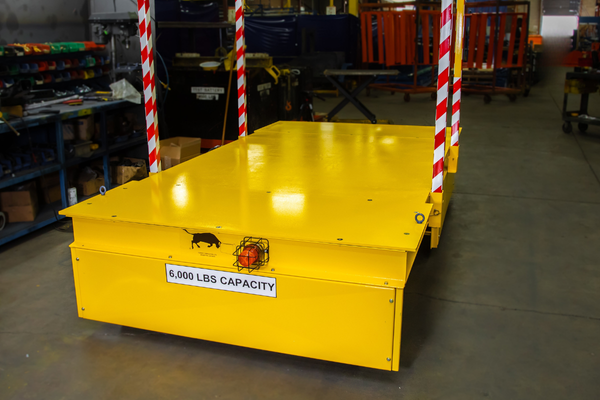
Choosing A Warehouse Cart For Your Operation
Choosing the right warehouse cart can be challenging due to the numerous options available. To make an informed decision that maximizes your material-handling investment, consider the following factors, as suggested by MHI:
- The size of the materials you plan to transport.
- The weight of a typical load.
- The ideal height for loading and unloading the cart.
- Any potential ergonomic risks associated with operating the cart.
Once you have this information, look for specifications that align with your needs. For example, if you need to move several cartons that are 1.5 feet high, a Carney Order Picking Cart would be a good choice due to its ample vertical space between shelves. However, if you need to carry larger boxes, a Flat Deck or Tow Cart is more suitable, as it has no upper limit on holding space.
When it comes to the weight limits for warehouse materials, MHI recommends that manually operated carts should carry loads of no more than 2,000 to 2,500 pounds. If the load exceeds this range, employers should provide powered assistance, such as tuggers or pushers.
Select carts with carrying surfaces that allow workers to keep handling loads between their shoulders and knees. This positioning enhances safety during the loading and unloading process. Additionally, whenever possible, choose models that come with comfortable push bars for added ergonomic support.
Warehouse Carts & Optimization
While standard warehouse carts can meet the needs of most facilities, a bit of customization can make a significant difference. Carney offers extensive customization options for all material handling equipment, including the warehouse carts and trucks mentioned above.
To begin designing the perfect custom material handling cart for your specific needs, request a quote to initiate a conversation with our engineering team. We will propose a design and make any necessary adjustments to ensure the equipment aligns with your workflow.
All CBH warehouse carts are constructed from heavy-duty, powder-coated steel, feature reliable casters, and incorporate ergonomic designs. To speak with a member of our sales team, please email info@carneyfabricating.com or call 905-564-0303.
